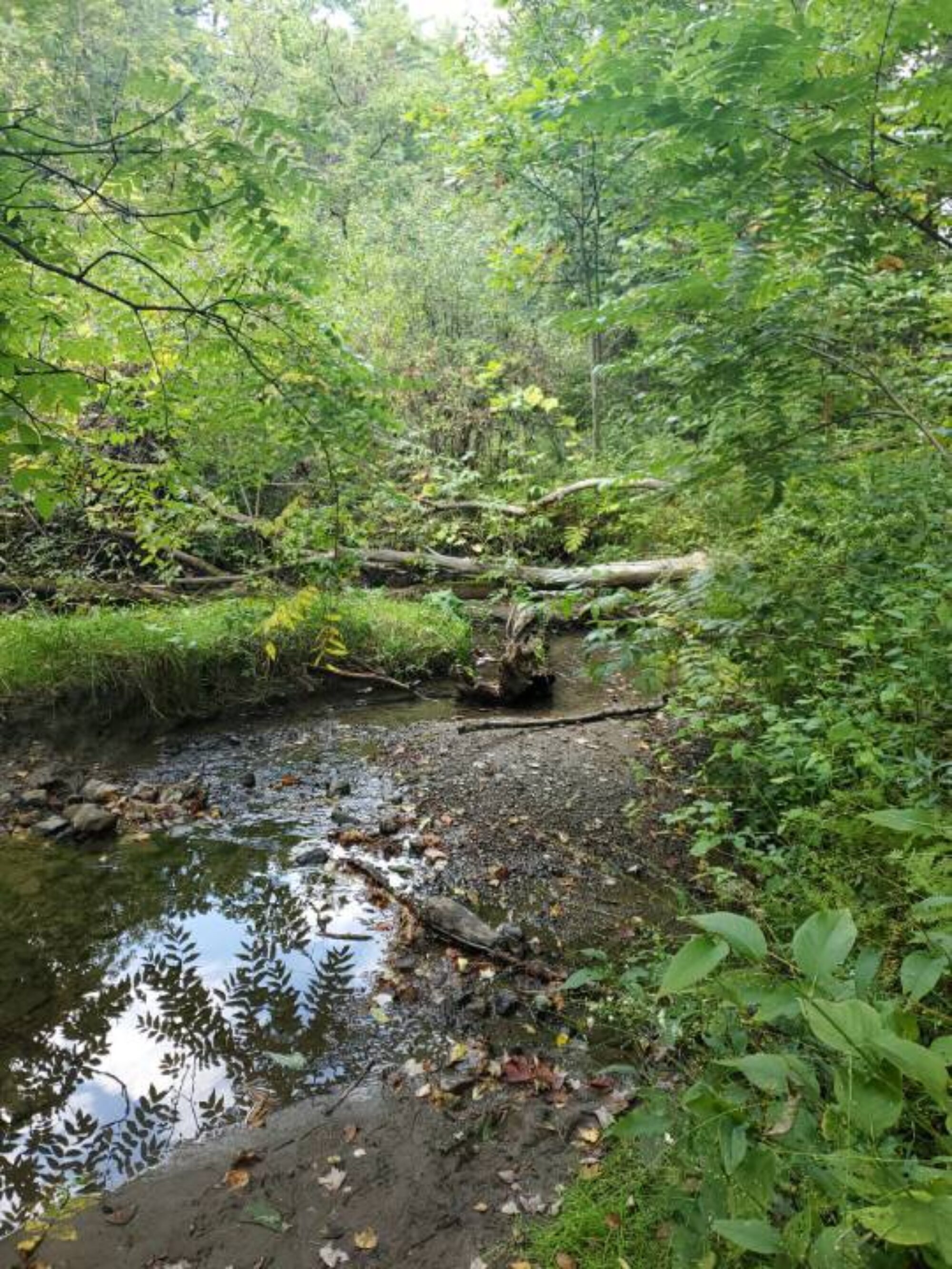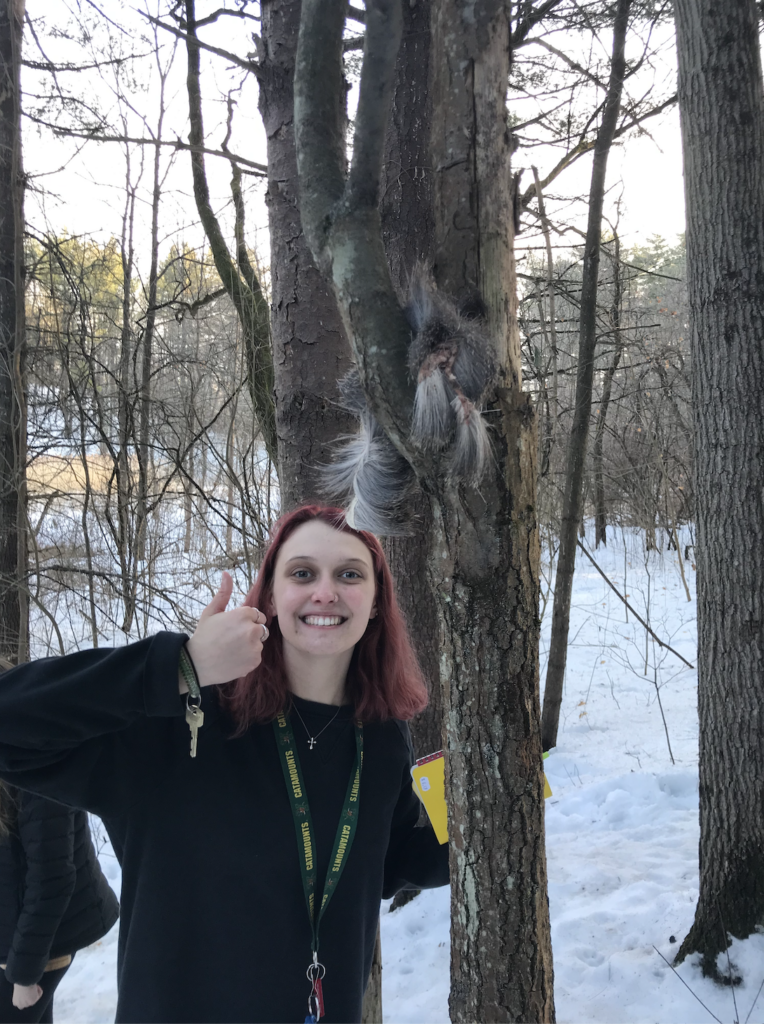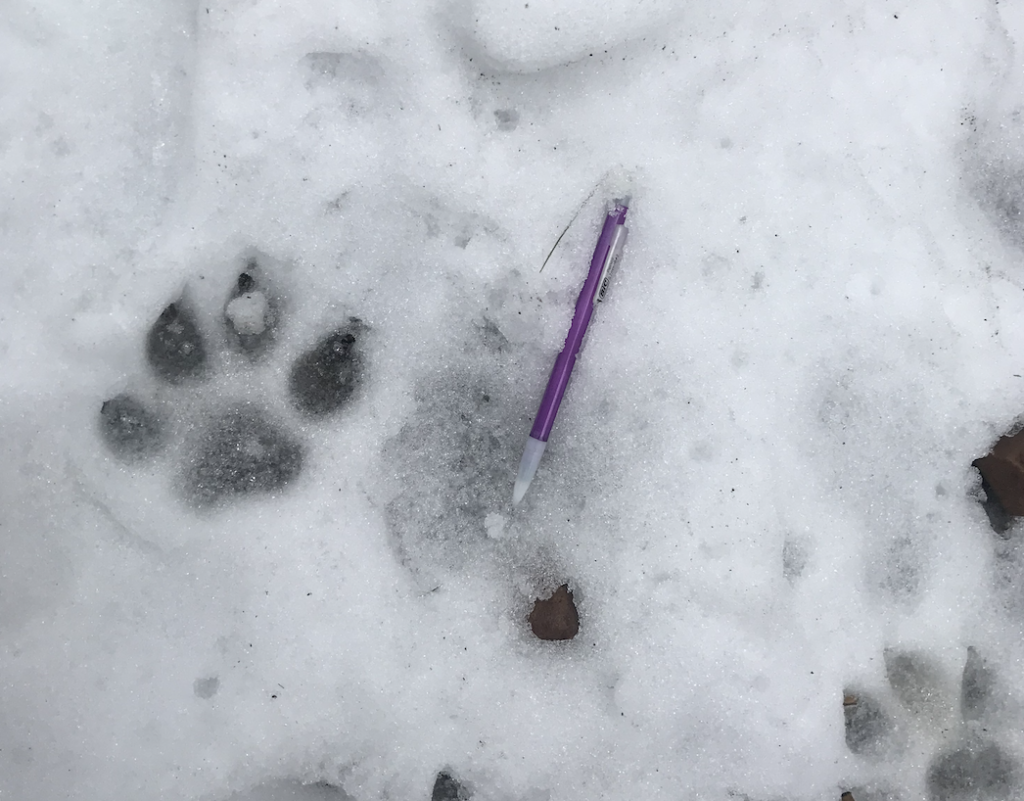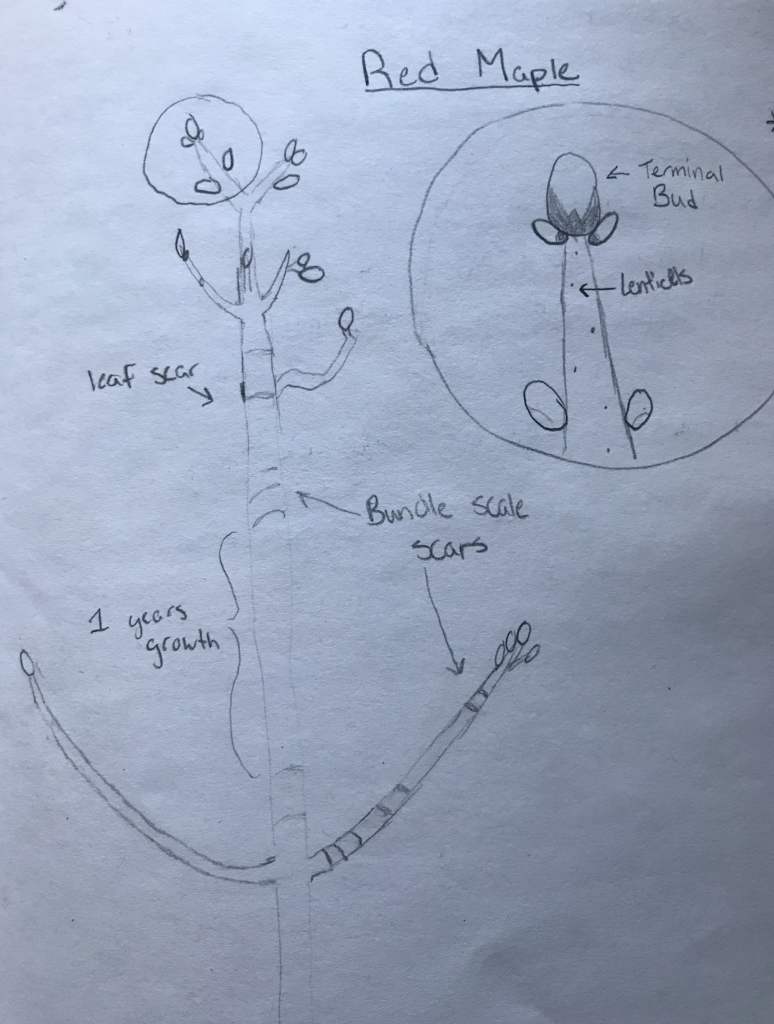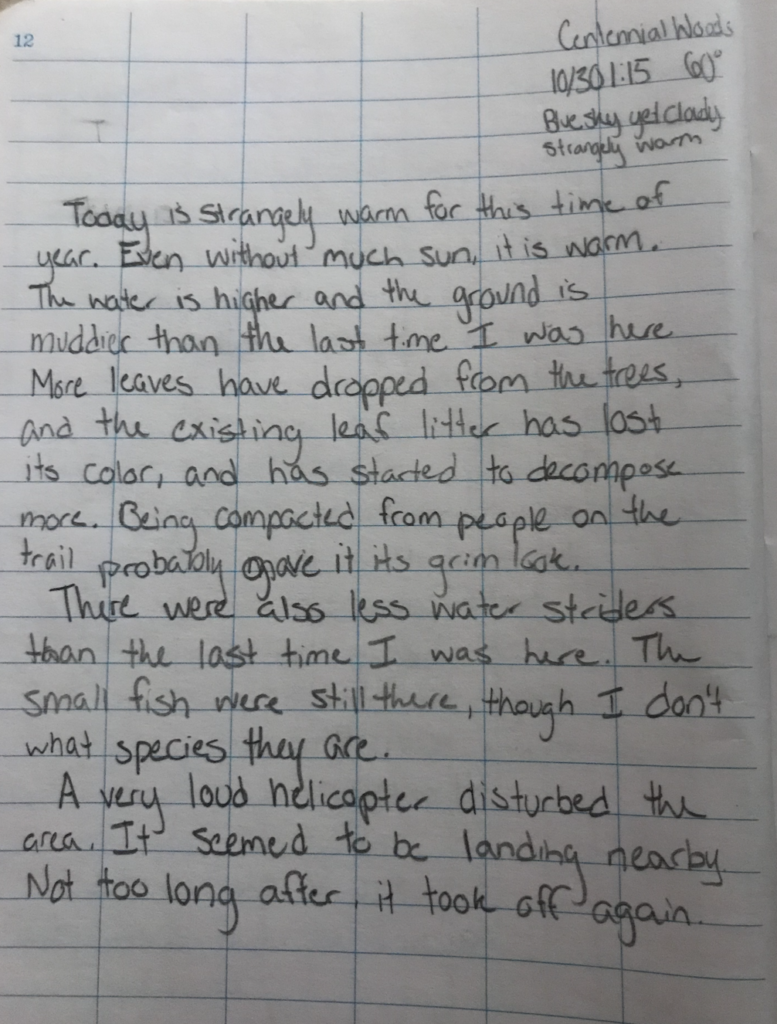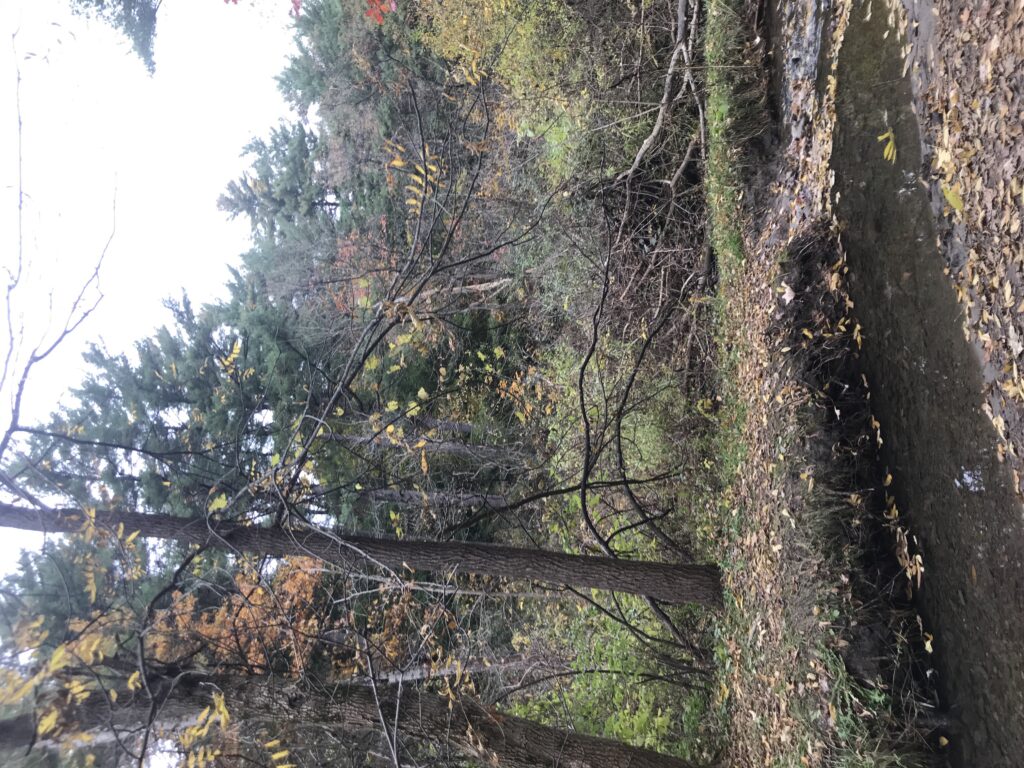Since the last time I was here, a lot has changed. When I visited in March, I was still falling through deep snow in some areas and climbed onto the rock with ease. This, however, not the case just a few weeks later. Now, there was essentially no snow left and I found myself literally rock climbing. Our wood pallet of a ladder had rotted over years of exposure to the elements, so it took me a few tries to hoist myself up. Then, once I was on top with a clear view of the woods around me, it was apparent that it was officially springtime in Vermont. With the snow gone, the rock almost seemed bigger.

After hanging out a little bit looking around, I decided to check out the stream slightly downhill of the rock and noticed a lot of phenological changes, as well as evidence of disturbance by reading the forested landscape.

As seen in Figure 2, this tree has experienced disturbance. I wonder what the cause of this was? Past logging? Also, this is one of the bigger (older) trees in the area. Why was it left when others were cleared out years ago?
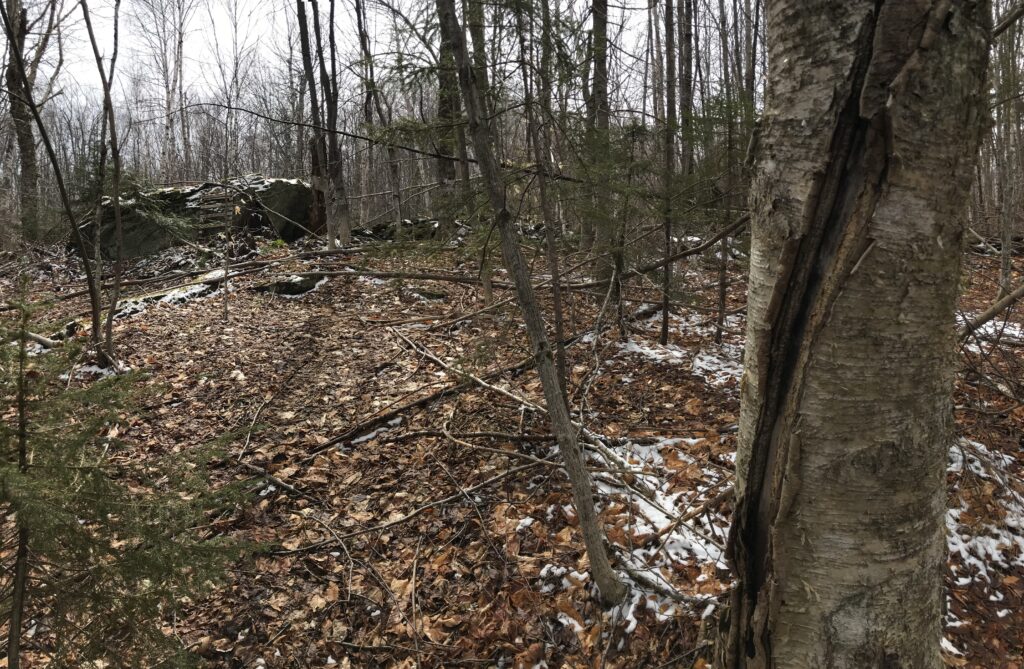
Here is another tree (yellow birch?) that has experienced disturbance, however, it is harder to guess what might’ve happened to it. My first thought was lightning, but lightning might leave more damage. I remember writing about this tree in my phenology blog in high school, but I don’t remember what my teachers at the time thought happened to it.

After looking at disturbed trees along the way, I made it down to the stream, which was fairly stagnant. However, it did prove to be lively when I noticed what can be found in Figure 5.
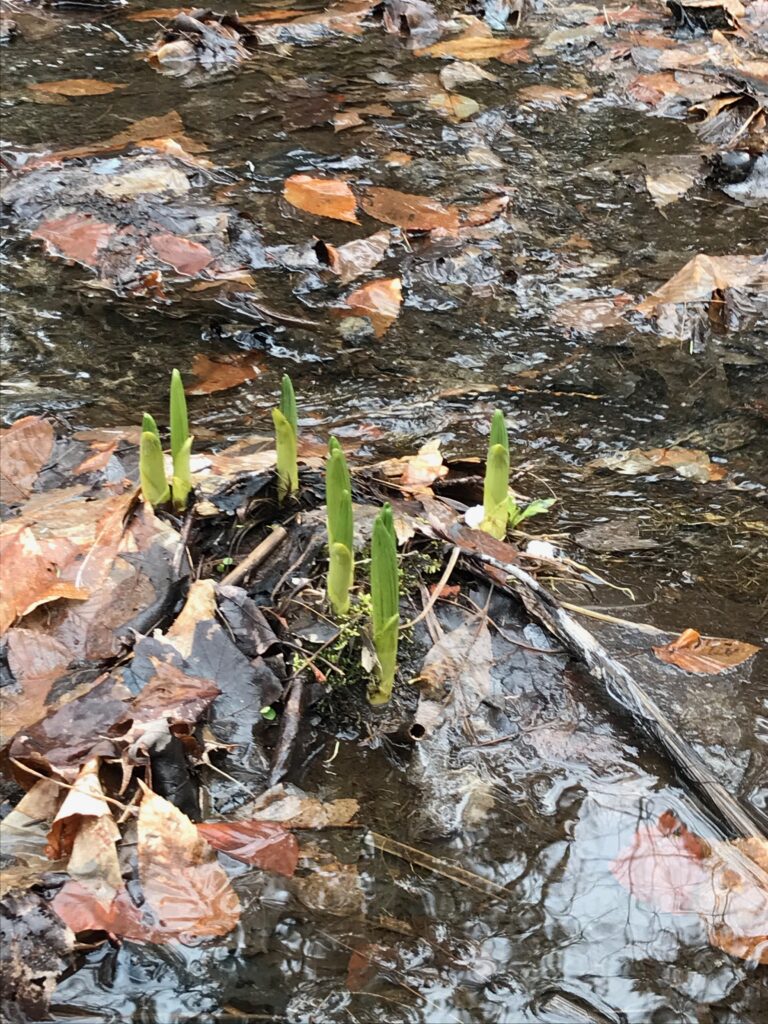
Though it is still sprouting, I do not know what this plant is. I have been looking up different things and will continue to do so out of curiosity. As it grows more, that might help me identify it as well. Or, I could ask my parents who are very familiar with a wide variety of plants.


Figure 7
Figure 6 and Figure 7 show more phenological changes that I witnessed during my time in this area. It really shows how much can change with the climate in so little time. Though this will likely be my last blog post, I am thankful it brought me back out to this area, and I am excited to explore it more in the future.
